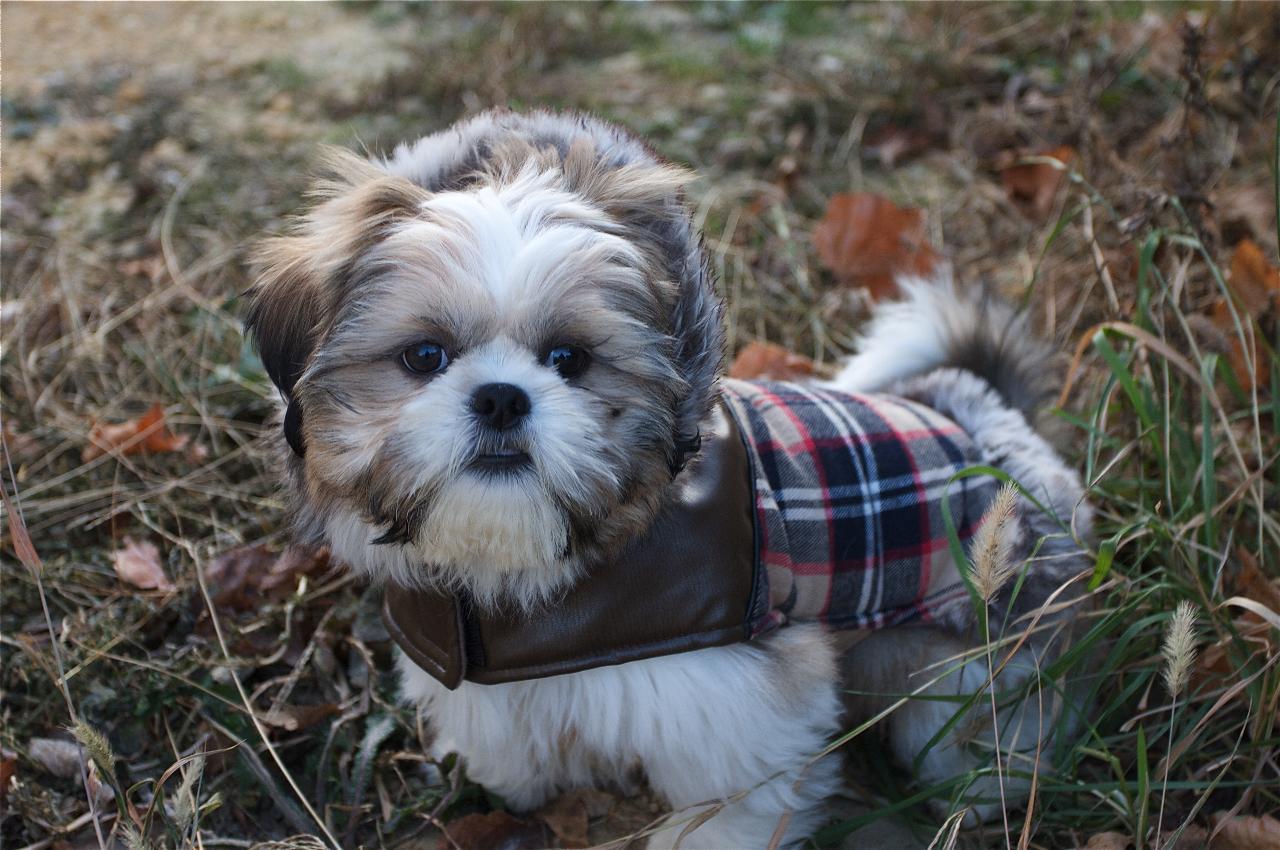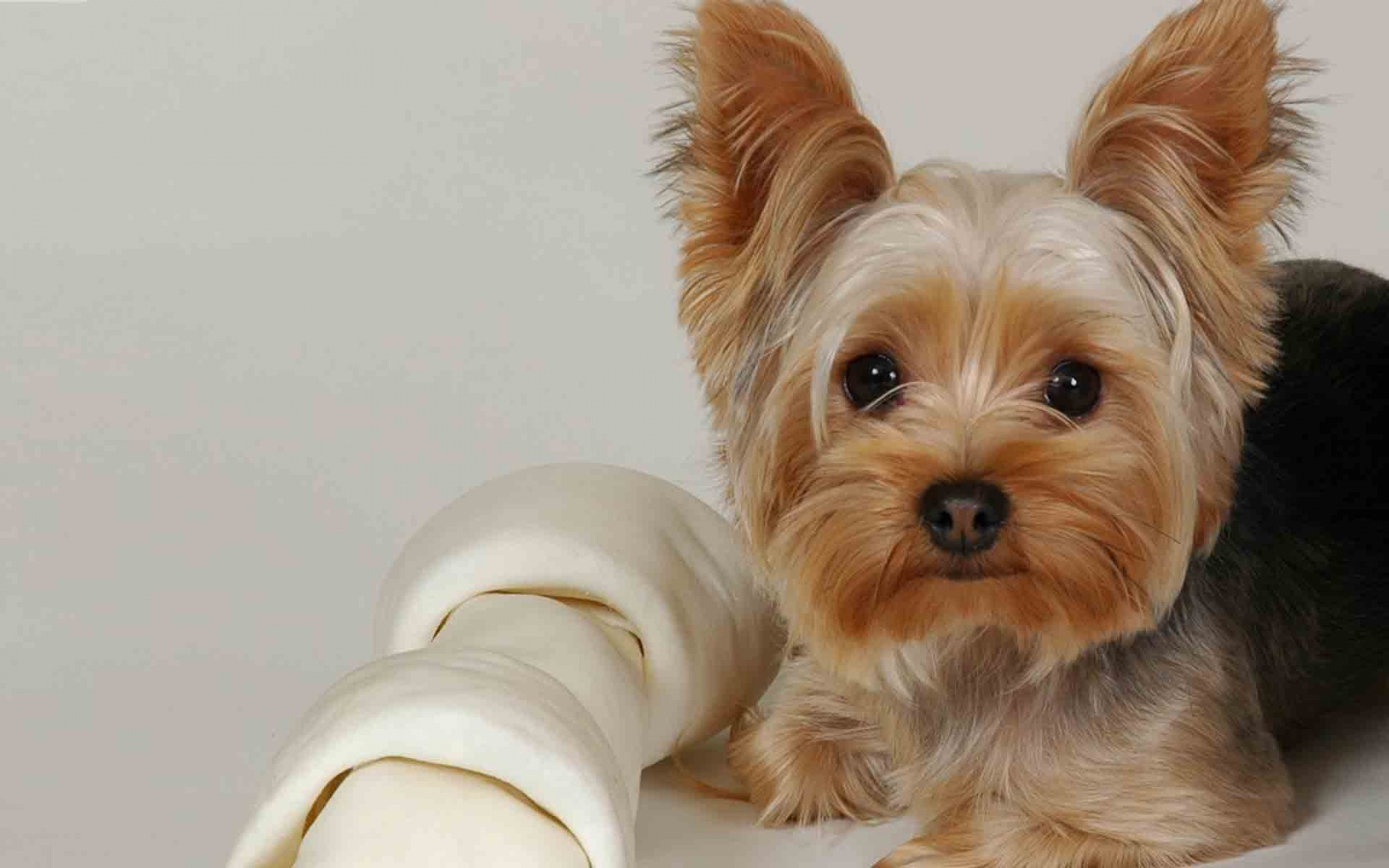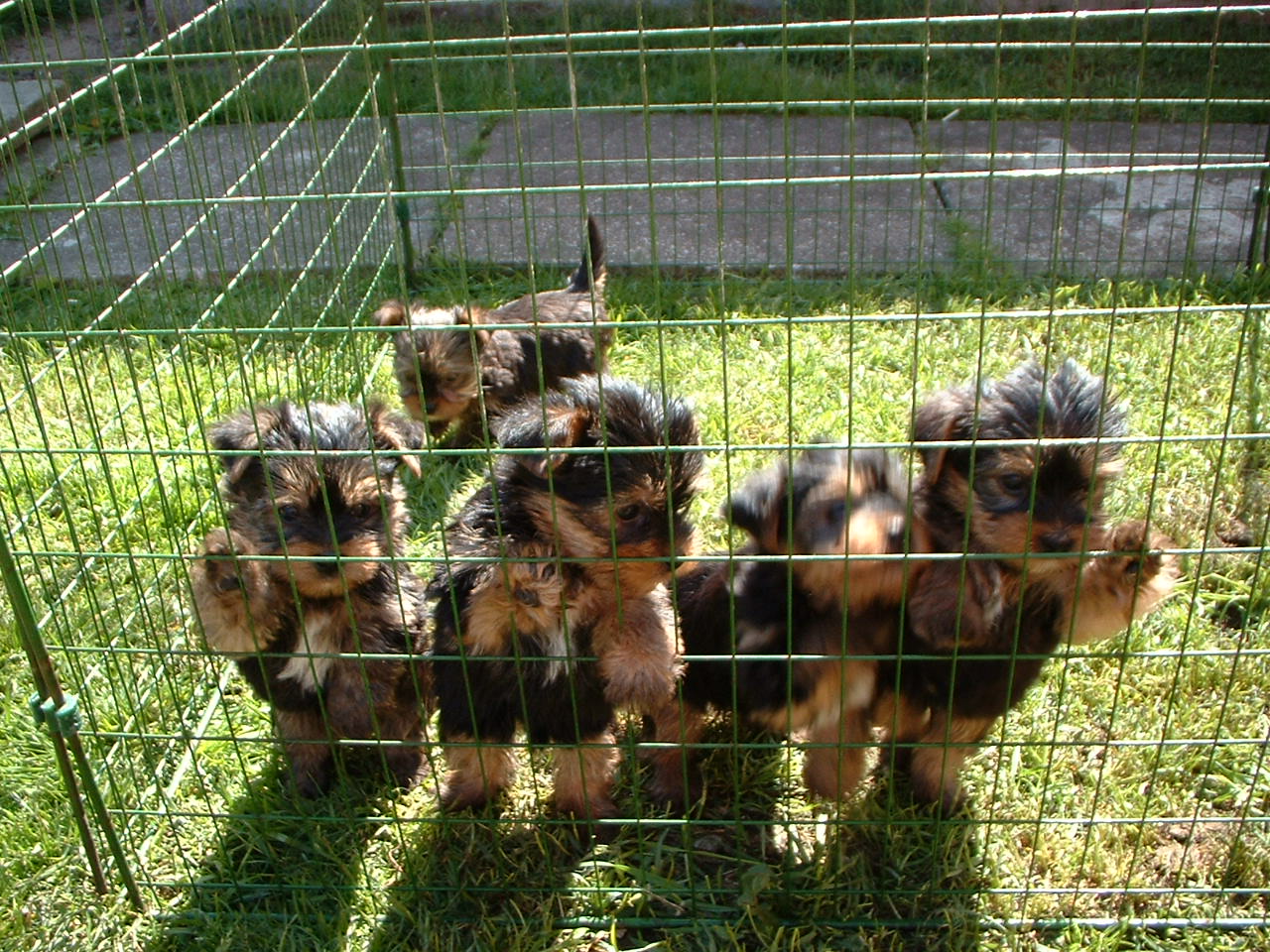dogspedia.net |
| Posted: 31 Mar 2011 01:21 PM PDT cute baby pug with blue collar sitting on the carpet Pug – one of the oldest rocks known in the year 400 BC. er. He has always stayed with the man and enjoyed his love. Male baby pug on the bed In Holland, his name mopshond (from the Dutch word “to grumble”) in Germany, pug, France – Karlin, and in some countries – Pag. The name “PAH” has several versions, most likely as follows: the expression of the muzzle a dog like a monkey marmozetku, which enjoyed great popularity in the early XVII century and was called Pag. Title Pag-dog stuck and remains to this day. Adult male pug sitting on the street Pug. Official Standard General view. Dog square format, the compact and proportional. Growth, proportion, composition. By the pug is very suitable motto «Multum in parvo» (literally: much in the small), it reflects its compact, robust addition and power of well-developed muscles. Weight: 6,4 – 8,2 kg. Head large, massive, round, not convex (“apple”), without retraction. Dark eyes, very large, shiny, convex and rounded, with soft and friendly expression, but when excited they are full of fire. Ears are thin, small, soft, reminiscent of black velvet. Ears can be of two types: Hanging on the cartilage – like “Roses”, or hanging – like “bud” (the latter is preferable). Head is covered with deep folds of skin. Muzzle short, blunt, square, but not turned up. Bite – close a snack. Neck, Topline, Body. The neck is strong, robust, slightly arched, medium length, high-pitched, to carry head proudly. Back short, straight from the withers to the high set tail. Housing is short and strong, broad chest, with rounded edges. Tail in a tight ring, pinned to the rump. Ideally, the tail is curled in the two rings. Forequarters. Limbs strong, straight, medium length, elbows are directly under the withers. Scapula oblique. The pasterns are strong and slightly sloping. Feet slightly elongated, with toes well split nails black. Fifth toes are usually removed. Hindquarters strong and massive. The angle of the knee joints of moderate metatarsal steep. When viewed from the rear limbs are parallel to each other. Angulations are balanced with the hindquarters angulation front. Thighs muscular. Paws – as in forequarters Cute black pug puppy Coat a thin, tight, soft to the touch, a short and brilliant. Colour Silver, apricot fawn (apricot-yellow-brown) or black. Silver or apricot-fawn colors should be saturated, contrasting with the mask on the face. Special marks are clearly defined: the mask on the face, ears, warts on his cheeks, a spot on his forehead and “belt” on the back should be as intense black color, the darker and expression, the better. Movement. When viewed from the front legs should be imposed forward, indicating the strength of pasterns. Dog confidently puts his paws on the ground, which are aimed straight ahead. Push the hindquarters strong and free, is transmitted through the hock and knee joints, without turning them outward or inward. Hind limbs move in line with the front. Limbs in motion slightly bent under the body. Motion characterized by a slight swaying of the pug rear of the case, they are free, confident and graceful. Temperament. The breed has a balanced and calm character, playfulness, great charm, independence and devotion to the owners |
| Posted: 31 Mar 2011 01:08 PM PDT Shih Tzu puppy with coat History of Shih Tzu came to us from documentary sources, paintings and art objects dating from 624 a year by. er. During the reign of the Tang Kiu Tai ruler Vigouroux Chinese court gave a couple of dogs, which, according to rumors, he has received from the Fu Lin (presumably the name of the Byzantine Empire). Mention of these dogs also occurs in 990-994 years when people Ho Chu sent them as a tribute. Little decorative Shih Tzu puppy In 1934 was organized by the Beijing club shih-tzu, and in 1938 developed a standard for the breed with the help of Madame de Bruel, emigrant from Russia. Four baby Shih Tzu puppies relaxing the bed Shih-tzu. Official Standard General view. Shih Tzu – a sturdy, energetic, cheerful little room with a long-haired dog with undercoat. As befits a descendant of the ancient and noble lines, extreme tsenivshihsya at the Chinese court, a shih-tzu haughty and arrogant posture with head held high and elevated over the back tail. Although the size of the dog may be very different, Shih Tzu must be compact, robust and dense, with a considerable weight for its size. Despite the fact that the Shih Tzu – a small domestic dogs, it should be assessed like any other breed, that is, any deviation from the ideal of articles listed below in the standard should be penalized according to the severity of this deviation. Defects in addition, found in all breeds, as wicked a shih-tzu, regardless of whether they are mentioned in the standard. Height, weight, proportion, composition. Height: Height at the withers – 23 – 27 cm, but not less than 20 cm and not more than 28 cm Weight. 4 – 7,3 kg. Proportions: The length of the back from withers to base of tail slightly greater than the height at the withers. Shih Tzu in any case should not be so high as to appear vysokonogim, or be so low as to appear squat. Addition: regardless of the size shih-tzu, a compact and sturdy dog ??with a sufficient weight and strong addition. The head is round, wide, perfectly folded, not too big nor too small. Expression in his eyes warm, affectionate, open, friendly and condusive. Overall a nice looking expression is more important than individual shortcomings. Adult female Shih Tzu breed dog Neck, Topline, Body. In assessing the most important is the overall balance without the explicit separation of the individual articles. The neck is set high, smoothly into the withers of medium length, providing a proud posed head, harmonizing with the growth and length of dog. Topline: Straight. Housing is compact and sturdy. Dog somewhat elongated – body length slightly longer than the height at the withers. Chest broad and deep, with rounded edges, but not barrel shaped. The belly is lowered slightly below the elbow. Distance from elbow to withers is slightly larger than the distance from the elbow to the ground. Croup line. Tail Set on high, covered with long hair as “Sultan”, curled over the back. Forequarters. Vanes sloping, tight to the body. Legs straight with good bone and well muscled, slicing the thorax. Elbows held tightly to the body. The pasterns are strong and vertical. Fifth fingers may be removed. Feet strong, thickly padded, point straight ahead. Hind limbs. Angulation hind limbs must be in balance with angulation of forequarters. Legs with strong bone and well developed muscles, knee joints are expressed. When viewed from the rear limbs are in line with the front, but not already. Hocks short, steep. Dewclaws removed. Feet strong, thickly padded, point straight ahead. Coat a luxurious, long, thick, double coat. Slightly wavy coat. Hair on the head with a ribbon knotted in a bun. To give the dog smooth lines can trim feet, the bottom of the hull and under the tail. |
| Posted: 31 Mar 2011 09:45 AM PDT Small female baby Silky Terrier Bred in the late XIX century in Australia by crossing local Australian Terriers and imported Yorkshire, Silky Terrier combines the best qualities of both breeds. Baby Silky Terrier in front of the mirror In 1926 he published the revised standard, which was an attempt to establish a uniform weight. In 1932, the Board of Control for dog breeding in Victoria has taken steps to protect all three species from further mating. Two Silky Terrier puppies male and female lying on the floor Australian Silky Terrier official standard General view. Silky Terrier – a real “toy” terrier. He was stocky, with a slightly long body and a light bone structure, but strong enough to stay at home hunter of rodents. He has a silky coat, separated by “parted” from the forehead to the base of the tail, and kind of well-groomed, but not “sleek” dog. Natural curiosity and zest for life make snare the perfect companion. Growth, proportion, composition. Height: 23 – 25 cm deviation in either direction is undesirable. The head is strong, wedge-shaped, of medium length. Expression in his eyes attentive and insightful. Eyes small, dark, almond-shaped, dark-rimmed eyelids. Ears are small, in the form of an equilateral triangle, set high, erect. Silky keeps his ears straight up, not placing a hand. The skull is flat, not too broad between the ears. Length of skull slightly more length of muzzle. Go Stop is moderate. Nose black. Teeth are strong, incisors are on the same line. Scissor bite. Neck, Topline, Body. Neck Medium length, graceful, with elaborate line withers. Gracefully goes into sloping shoulders. Topline: Straight. Chest broad and deep enough to reach the elbows. Corps planted moderately low, a few stretch – the length of the body about one-fifth more than the height at the withers (the length measured from humeroscapular joint to point of buttock). The tail is docked, the dog keeps it upright or slightly below. Forequarters. Scapula oblique, with a sufficient angle with the shoulder joint to insert his feet under the body. Limbs strong, straight, with slight bone. The feet are small, round and compact. Directed straight ahead – no outwards or clubfoot. The pads are thick and elastic. The nails are strong and dark. Fifth fingers are removed. Hind limbs. Thighs strong and muscular but not loaded. Angulation knee pronounced. Hocks short, parallel (when viewed from behind). Feet are the same as in forequarters Silky Terrier female puppy with pink collar Coat straight with no undercoat, shiny, silky to the touch. In adult dogs hair falls, repeating the shape of the body, but does not reach the ground. At the parietal part of the wool is so thick that forms the “wig”, but long hair on ears and front of the muzzle is not allowed. From forehead to base of tail hair is divided naturally “parting”. The tail is thickly covered with hair, but no suspension. On the metacarpus and metatarsus hair is short. Feet covered with short, tight coat. Color blue and tan. Free movement, light and energetic. Push the hindquarters strong. Temperament. To snare typical agile, energetic kind of terrier. Behavior cheerful, friendly, responsive. |
| Posted: 31 Mar 2011 09:28 AM PDT Cute baby Yorkshire Terrier male Yorkshire Terrier became a fashionable lapdog in the late Victorian era, and possibly earlier. But it takes its origin in the families of the working class, especially the weavers. In fact, the fate of Yorkshire terrier is so closely associated with them that the products coming from the looms, invariably associated with a soft, silky and remarkably long-haired dog. Yorkshire Terrier Puppies playing together The very first mention of the breed in the United States refers to 1872. Rings for her at all exhibitions have appeared since 1878. The first exhibition rings were divided by weight – up to 2,3 kg and above 2.3 kg. However, the size of dogs soon stabilized: from 1,4 to 3,2 kg. Once it became clear that the ring for a larger dog is almost filled, all dogs were combined in a single group. Very cute female Yorkshire Terrier Yorkshire Terrier. Official Standard General view. Yorkshire Terrier – a long-haired toyterer blue-tan. Wool from nose to tail base falls on both sides of the body, forming a “parting”. Housing neat, compact and perfectly folded. The dog moves with her head held high, independent and confident. Head small, flat skull. Cranial vault is not too prominent or round. Muzzle not too long. Teeth strong, scissor bite or direct. Nose black. Eyes of medium size, not too prominent, dark. Expression of the eyes astute, clever. Eyelid black. Ears are small, in the form of an equilateral triangle, standing not too far apart. Limbs and feet. The forelegs are straight, elbows turning neither outside nor inside. Hind legs straight when viewed from behind, the angle of the knee is moderate. Feet are round, with black claws. Dewclaws removed. The tail is docked to half its original length, the dog takes it just above the back line. Coat. Very important quality, structure and length of coat. The hair on the body is moderately long and perfectly straight (not wavy). It can be trimmed to ground level to give the dog a neat appearance and ease movement. Fall on head long, it is collected into a bundle (topnot) in the middle or separated and collected into two beams on each side. Hair on muzzle is very long. At the tip of the ears mows up to a short coat, it can also be trimmed on feet to give the dog a neat appearance. Female baby Yorkshire Terrier playing on the porch Color. Puppies are born black and tan, with hair on the body are usually darker tan, including yellowish-brown hairs found black. In adult dogs are extremely important color on the body and richness of yellowish-brown on the head and legs. Colors should be as follows: blue – a dark-blue steel, but not silver-blue, and should not be confused with deer, bronze or black hair; tan – tan hair darker at the base, gradually lightening to an end. Should not be confused with black hair. Color on the body: the blue color on the body starts from the base of the skull and reaches the base of the tail. On the tail coat of a darker blue, especially at the end. Color on the head: deep golden tan, deeper and more intense on the sides of the head, at ear roots and on muzzle. Juicy ears reddish-yellowish-brown. Yellowish-brown in color should not be on top of the neck (nape). Chest and extremities: a bright, rich reddish-yellowish-brown color to the elbow on the forelegs up to the knee joint on the hind legs |
| You are subscribed to email updates from dogspedia.net To stop receiving these emails, you may unsubscribe now. | Email delivery powered by Google |
| Google Inc., 20 West Kinzie, Chicago IL USA 60610 | |















No comments:
Post a Comment
Note: Only a member of this blog may post a comment.